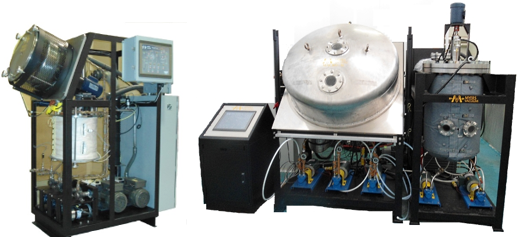The Pilot-15 and Macro-36 by Myers Vacuum for Cannabinoid Processing
Note: clicking the links below will take you to our glossary of vacuum-related terms and phrases. To return to this page from the glossary, just hit your “back” button.
Centrifugal molecular distillation (or short-path distillation) is recognized as the optimal thermal separation method for heat sensitive materials like cannabis, because it poses minimal risk of damaging or destroying the product – and Myers Vacuum is the recognized leader in centrifugal molecular distillation. The key principles behind Myers Vacuum’s stills are low pressure and extremely short residence time, both of which are absolutely essential to effective cannabinoid processing. Myers stills give you maximum purity, quality, and yield.
What is the purpose of the Myers Vacuum Centrifugal molecular distillation system for cannabis?
Centrifugal molecular distillation is a method of a thermal separation technique (molecular distillation) that works well with cannabinoids. It is a process of separation of thermally sensitive material that is typically used to increase concentration of a component. The cannabinoids have a different boiling point range in comparison to the other parts in the crude oil. Depending on the composition of the feed material, desired output the cannabinoid concentration can exceed 90+% with centrifugal molecular distillation.
 How Myers Vacuum’s centrifugal molecular distillation step is utilized with the
How Myers Vacuum’s centrifugal molecular distillation step is utilized with the

Pilot-15 and Macro-36:
Once properly prepared the feed material is supplied to the system from a temperature controlled customer supplied feed vessel. The feed vessel should have an outlet connection located at the bottom with a heated line that feeds into the variable speed degasser feed pump on the Pilot-15 system. From this feed pump the material travels through a heated line into the vacuum degasser that contains a spinning cone that flings the material onto the heated wall of the degasser. This removes residual amounts of light end components (moisture, solvents, terpenes, etc.) and pre heats oil for processing. Once this degassed material travels down the walls, there is a bottom drain that is connected to a variable speed liquid transfer pump with heated lines that feeds the material onto a heated spinning disc in the main hi-vacuum chamber. The temperature chosen for the disc heater controls the material temperature on the disc. A portion of the material evaporates (distillate) and is condensed (liquefied) on a water cooled condenser plate and flows through an outlet on the baseplate, the un-distilled portion (residue) is contained in a separate gutter system and flows to a separate outlet. The outlets of both the residue and distillate are fed through heated lines to variable speed liquid transfer pumps, through check valves and then to customer supplied discharge lines to collection containers.
 Example of process:
Example of process:
Depending on the requirements a single pass can be considered final product. In a recent customer experience a Pilot-15 system was supplied with a crude oil that was thought to be around 50% CBD. The material was fed into the system from the customer’s heated vessel and processed as a single pass. The distillate output was slightly over 11 liters per hour. The distillate was analyzed and was found to contain 85% cannabinoids of which 80% was CBD.
When the desired concentration is in excess of 90%, this is typically completed with two passes, the first pass is utilized to remove the <300 MW and below components including residual amounts of monoterpenes, along with sesquiterpens (~204 MW), di-terpenes (<282 MW), free fatty acids, etc. Then the second pass is used to concentrate the cannabinoid component (300-330 MW typically). However a current customer with a Pilot-15 system is utilizing cold ethanol extraction followed by solvent recovery, monoterpene strip with a decarboxylation step in a vacuum reactor this crude oil tests in the 60-70+% range and from this reactor they are do a first pass through the Pilot-15 to distill 80% and then a second pass on the distillate to concentrate the cannabinoids to reach >95%.
 Why Myers Vacuum’s centrifugal molecular distillation is preferred:
Why Myers Vacuum’s centrifugal molecular distillation is preferred:
- Short residence time on the heated surface. The material is fed continuously through the system. Contact on the spinning disc is around one second. This equated to less thermal degradation of product.
- Short path, the path between the heated surface and the condensing surface is within one mean free path. The material is in the free molecular flow regime in hi-vacuum.
- Material of construction, mainly 300 series stainless steel with a minimum of glass. Glass is utilized where observation is needed. Glass is used for the viewports on the condenser, degasser, traps and flow lines on the Macro-36. Glass is used for the chamber, degasser and traps on the Pilot-15.
- Exponentially increasing surface – as the material travels from the center of the spinning disc and as more evaporates the film becomes thinner exposing more surface area. This allows for increased yield of distillate from feed with a single pass.
- Vacuum system, both the Macro-36 and Pilot-15 utilize liquid nitrogen traps along with two stage oil sealed vacuum pumps for the degasser. The main chambers of both utilizeliquid nitrogen trapswith two stage oil sealed vacuum pumps as well as hi-vacuum diffusion ejector pumps.
- Ease of Operation, The Pilot-15 and Macro-36 systems are both touch screen controlled with a graphic interface for operation. To make an adjustment or parameter change whether it is turning on/off a part of the system, liquid transfer pumps speed, or a temperature change you simply touch on that location of the screen and a pop up screen will appear and you make the adjustment. All temperatures (both set and actual for each device) along with vacuum pressures are displayed on the screen.
- All liquid nitrogen traps have Automatic fill control to maintain constant material cooling level
- Continuous, both the Pilot-15 and Macro-36 operate continuously from feed tanks at atmosphere to feed tanks at atmosphere rather than a batch mode.
- As the residue leaves the rotor it contacts a thermocouple which displays actual temperature product has reached.This precise temperature allows separation of materials that have close evaporation temperatures.
- Simple mechanical design reduces maintenance/operation cost
- Small foot print
· Pilot-15 is requires just 34” x 59”
· Macro-36 requires 107” x 146” with separate control cabinet that requires 20” x 17”.
For more information Quote, detail description of operation, or discussion of the system usage Please contact us at dmyers@myers-vacuum.com
 Some key steps in the process:
Some key steps in the process:
- Oil extraction. Typically this is done with either using solvent (hydrocarbon) based or supercritical. In either case water will want to be avoided to eliminate water soluble extracts.
- Winterization, also known as dewaxing. This is the removal of particles in the oil that are crystallized under controlled conditions. This is then put through a filter for mechanical separation.
- Solvent recovery. Once winterization filtration is completed the solvent used in the process will have to be removed or recovered.
- Water wash, removal of water soluble compounds that are inadvertently extracted.
- Decarboxylation, heating the oil to a temperature that releases the carboxyl group.
- Terpene extraction. Removal of material under the 200 molecular weight range will aid in efficiency of cannabinoid distillation.
- Centrifugal molecular distillation.

